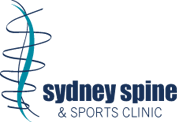What to do when you’re injured
Tips for injury management, treatment, and recovery from our Sydney chiropractors
When you pull a little injury during a gym workout, or feel a niggle when you play sport, it can feel quite frustrating. After all, it stops you exercising at full capacity and participating in the things you love to do.
Whilst you can’t prevent every injury, there are a number of things you can do to treat and manage your niggles to avoid them developing into serious issues. Alexandria Chiropractor Dr Guy Finch explains.
How to manage an injury
Depending on the type and severity of your injury, in most cases the first thing we encourage you to do is keep moving. As a rule, you should only exercise at a level where you’d score your level of pain as a 3 out of 10. If your pain exceeds 3 when you exercise (or is worse the following day), you need to reduce the level of activity. So, you may need to scale back your exercise to a tolerable baseline and slowly build back up to your normal level. You can do this by regressing or adjusting your exercise. This approach helps aid your body to gain strength and manage the load during your recovery.
Secondly, it is important to be doing some rehab work at home. We recommend 10-15 minutes a day of foam rolling, massage ball work, stretching and muscle activation . This small investment in your body can really make a huge difference to your recovery. If you struggle to find time during the day to do it, it’s easy to get it done when you’re relaxing in front of the TV at night.
If you are concerned or unsure about your injury or pain, please get in contact with one of our experienced chiropractors for a diagnosis and treatment plan.
How to prevent an injury
1. Warm up and stretch
Warming up before you exercise is crucial for injury prevention. It prepares you muscles, joints and nervous system for the load and activity that is about to come. While there are a variety of ways you can warm up, some key principles to follow are:
Your warm up should be at least five to ten minutes long.
It should focus on the parts of your body that you are going to use in your workout.
Choose a dynamic, movement-based approach. This aims to stretch your muscles dynamically through a sequence of exercises. Some good ones to do include glute bridge, deadbugs, and baby get ups.
2. Stick to your limits
It’s important that you perform within your ability. This means sticking to a weight you can achieve, without using other body parts to compensate. Ensure you have solid technique before you start challenging your body. Remember, the physical habits and techniques you follow become second nature. If you have good technique, you are less likely to ‘put your back out’ when you reach down to pick up something small.
3. Listen to your body
Always be aware of what your body is telling you. If your regular exercise feels twice as hard or you aren’t feeling one hundred percent, this can be sign that you are overtraining or still recovering. Listen to your body. Have a de-load session, drop the weight, lower the intensity. Instead, focus on your movement and form. Give your body more time to recover so you feel better for your next session.
When to see your chiropractor
If you’ve spent time regressing, then progressing, and you no longer feel pain from your niggle or injury - congrats! However, if you’re still struggling with pain or lack or movement, get assessed. Your trusted chiropractor or health professional can complete a comprehensive assessment to diagnose the issue properly. We will review your functional movement, joint range of motion, and muscle strength and coordination as we investigate the root of your problem and map out a treatment and recovery plan.
Relieve sporting niggles and injuries with Sydney Spine
At Sydney Spine and Sports Clinic, we put you first. We believe in offering chiropractic care that enables you to make informed and educated choices about your health. We can help you find relief from gym injuries or sports niggles throughout your body. If you are suffering discomfort and would like to talk to us about how we can help you get mobile and active again – make an appointment with one of our chiropractors.

